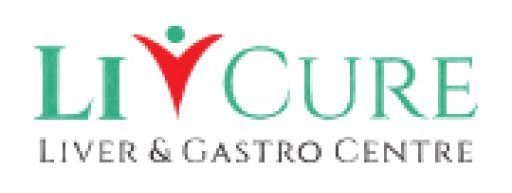
Whenever patients or families meet me to discuss a liver transplant, one of the first questions I hear is,
“Doctor, my MELD score is high. Does that mean I’ll get the surgery soon?”
The MELD score (Model for End-Stage Liver Disease) is indeed important, but it’s not the only factor we consider. A successful transplant requires more than a number — it needs a patient who is medically ready, psychologically prepared, and socially supported.
In this article, we will take you behind the scenes and explain exactly how we, as a transplant team, select liver transplant candidates.
Why “More Than a Score” Matters
A liver transplant is one of the most complex surgeries in modern medicine. It’s not a one-day decision — it’s the result of months of assessments, teamwork, and planning.
Yes, the MELD and Child–Pugh scores help estimate disease severity, but they don’t tell us everything about how a patient will handle the surgery or recovery.
That’s why selection goes far beyond lab results.
Step 1: Medical Eligibility — Is the Body Ready?
Before anything else, we ask: Can this person physically tolerate such a demanding procedure?
A. Severity of Liver Disease
- We confirm that the patient truly has end-stage liver disease and that medical therapy can no longer manage it.
- MELD score > 15 usually triggers evaluation, but timing must balance risk vs benefit.
B. Other Organ Functions
- Heart: ECG and ECHO ensure cardiac strength.
- Lungs: Spirometry and chest scans rule out chronic lung disease.
- Kidneys: Creatinine and urine tests show if dual-organ support is needed.
- Nutrition: Malnutrition can delay healing; we correct it before listing.
C. Absence of Uncontrolled Infection or Cancer
Active sepsis or widespread malignancy are temporary exclusions. We treat infection fully first — the transplant must never be performed in the middle of an infection.
Step 2: Donor and Anatomical Suitability
If it’s a living-donor transplant, we evaluate whether a healthy family member can safely donate part of the liver.
Donor Compatibility Checks:
- Blood group matching
- Liver-size match on CT volumetry
- Absence of fatty liver or health issues in the donor
If no suitable living donor is available, the patient may be listed for a deceased-donor transplant through official organ-sharing networks.
Step 3: Psychological Readiness — Is the Mind Prepared?
We always say: the mind recovers before the body does.
Fear, anxiety, and misconceptions often delay surgery more than the disease itself.
Our team’s clinical psychologist meets every candidate to assess:
- Emotional stability and coping skills
- Motivation to follow strict post-surgery care
- Support system at home
- History of depression, addiction, or denial
Patients struggling emotionally are not “rejected” — they’re counselled, educated, and supported until ready.
A calm, informed mindset leads to faster recovery.
Step 4: Social and Family Support
No patient walks this road alone. After discharge, the first three months require round-the-clock care — medicines, hygiene, diet, and check-ups.
We therefore evaluate:
- Who will be the primary caregiver?
- Is there financial stability for follow-up medicines?
- Does the family understand infection-control precautions?
A strong family backbone is as vital as a strong immune system.
Step 5: Lifestyle and Behavioural Factors
1. Alcohol and Substance Use
Patients with alcohol-related liver disease must demonstrate complete abstinence (usually 6 months) and undergo de-addiction counselling.
2. Nutrition and Fitness
Under-nutrition or obesity increases complications. Dieticians create high-protein plans to restore muscle mass pre-surgery.
3. Infection Control Habits
Simple practices — hand hygiene, vaccination, and regular screening — show responsibility and readiness.
These habits predict long-term success far better than lab numbers alone.
Step 6: Ethical and Legal Screening
Especially in living-donor transplants, transparency is essential.
Independent authorisation committees verify that:
- The donation is voluntary and fully informed.
- There’s no financial transaction.
- All documents (IDs, relationships) are genuine.
This protects both donor and recipient, ensuring the transplant meets legal and ethical standards.
Step 7: Financial Planning and Access to Care
While it may sound non-medical, financial preparedness is part of the selection of liver transplant cases.
The reason is simple: post-surgery medicines and follow-ups are lifelong. Interruptions due to financial stress can endanger the new liver.
Families explore:
- Government and state aid (Ayushman Bharat, CM Funds)
- Insurance coverage for transplant
- NGO or CSR programmes for low-income patients
Transparency about cost prevents anxiety later and allows uninterrupted treatment.
Step 8: Multidisciplinary Team Conference
Once all assessments are complete, the case is discussed in our transplant selection meeting.
Participants include:
- Hepatologist
- Transplant surgeons
- Anaesthetist
- Psychologist
- Nutritionist
- Social worker
Together, we grade every factor — medical, psychological, social, and ethical — before giving the green light.
This consensus approach reduces risk and improves survival.
Step 9: Prioritisation on the Transplant List
When multiple patients await organs, priority is determined by urgency and potential benefit.
- High priority: rapidly deteriorating patients with high MELD scores but otherwise strong recovery potential.
- Medium: stable but progressing disease.
- Low: compensated cirrhosis is still manageable medically.
We balance fairness, urgency, and survival probability — every organ is precious and must go where it will save the most life.
Step 10: Pre-Surgery Optimisation
Before the big day, we fine-tune the body:
- Correct anaemia and electrolytes.
- Treat infections.
- Strengthen lungs with breathing exercises.
- Encourage light physiotherapy to boost stamina.
This “pre-habilitation” makes post-operative recovery smoother and faster.
The Human Side of Selection
People often assume selection is mechanical — based purely on numbers.
But for us, it’s deeply personal. Each patient is a story, not a statistic.
Sometimes we postpone a case — not because the patient is “unfit,” but because their body or mind needs more preparation.
And sometimes, we move quickly when we see the window of opportunity narrowing.
Trust between the patient and the team is what guides these decisions.
What Happens If You’re Not Selected Immediately?
Not being listed right away doesn’t mean rejection — it means optimisation.
We continue:
- Medical management to stabilise you.
- Counselling to improve mental readiness.
- Nutritional therapy to strengthen your body.
Once parameters improve, we revisit the case. Many who were initially deferred later undergo successful surgery with excellent outcomes.
Beyond Selection: Commitment for Life
The selection of a candidate is not the end — it’s the beginning of a lifelong partnership.
After surgery, you’ll continue seeing the same team for years.
We celebrate birthdays, anniversaries, and milestones together.
That continuity of care is what keeps success rates high and lives meaningful.
Key Takeaways
- The selection of liver transplant cases involves medical, psychological, and social evaluation — not just a MELD score.
- A multidisciplinary team ensures safety, ethics, and fairness.
- Mental preparedness and family support are as crucial as physical health.
- Financial and lifestyle stability guarantee long-term success.
- Selection is dynamic — readiness evolves with guidance and care.
A Doctor’s Perspective
Every time we stand in the operating room and see a new liver start to beat, I think back to the first clinic visit — the fear, the questions, the hope.
Selection isn’t about choosing who deserves a transplant; it’s about ensuring who can benefit the most and live fully afterwards.
That’s why it’s “more than a score.” It’s a shared decision — guided by science, compassion, and trust.
